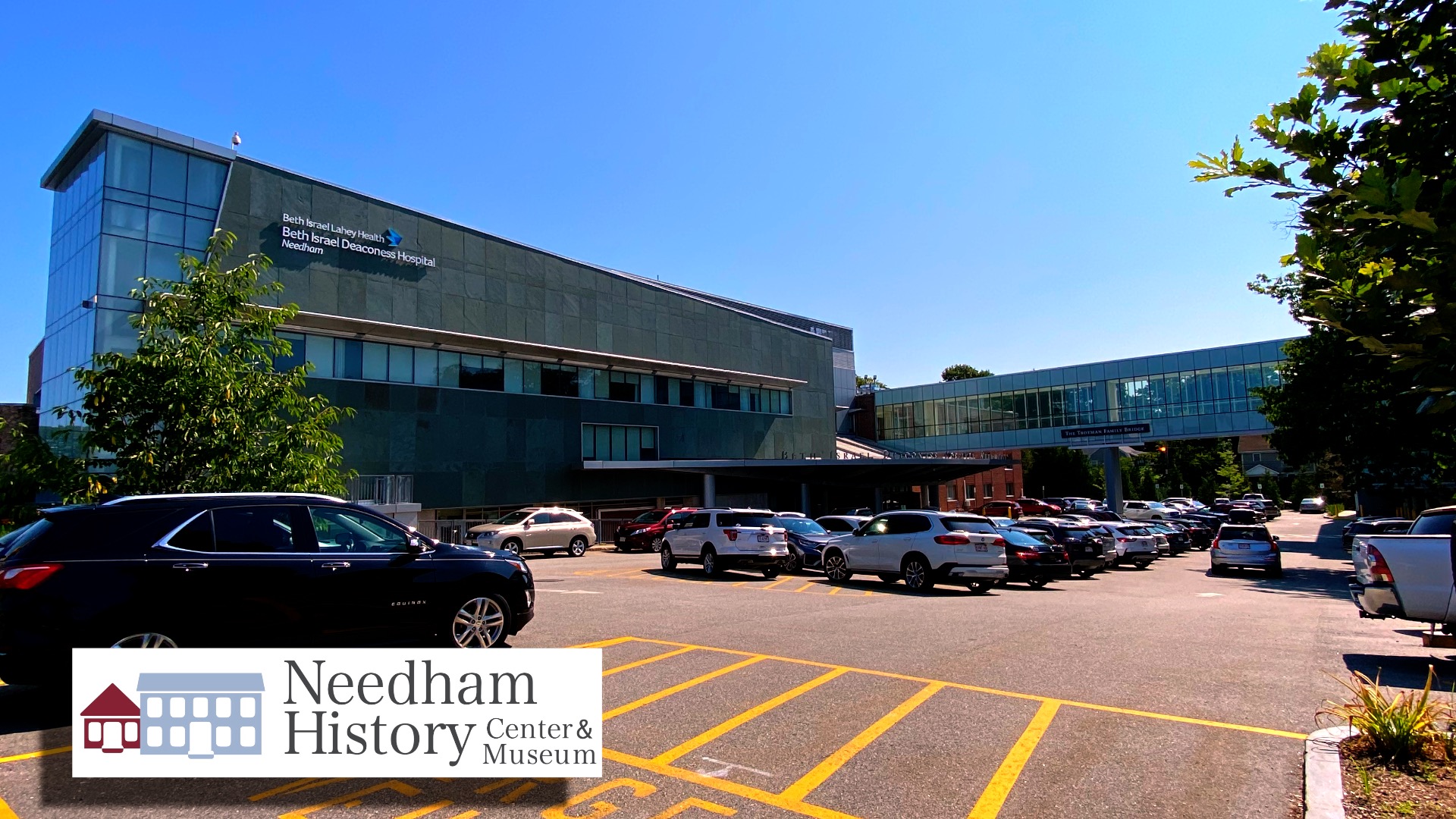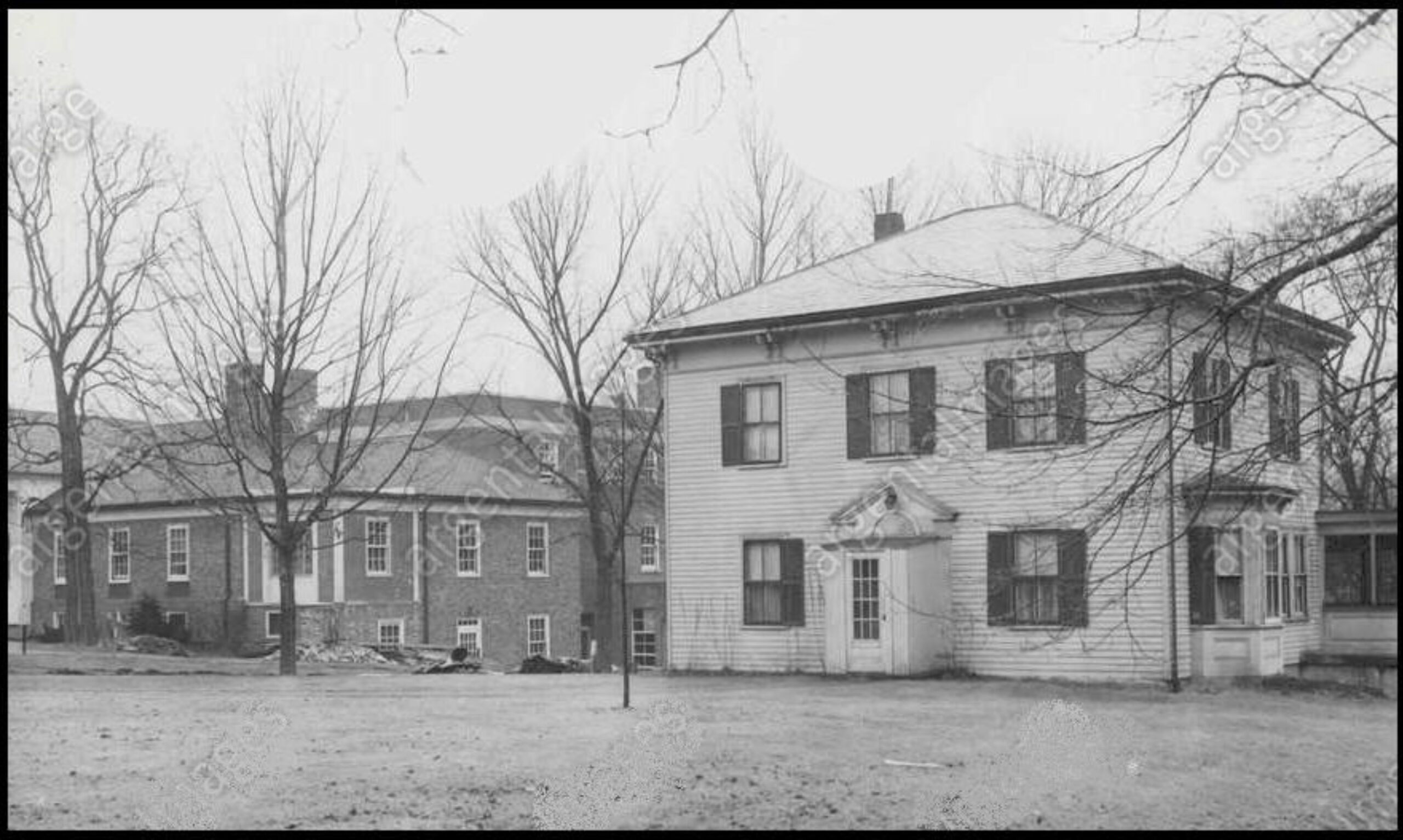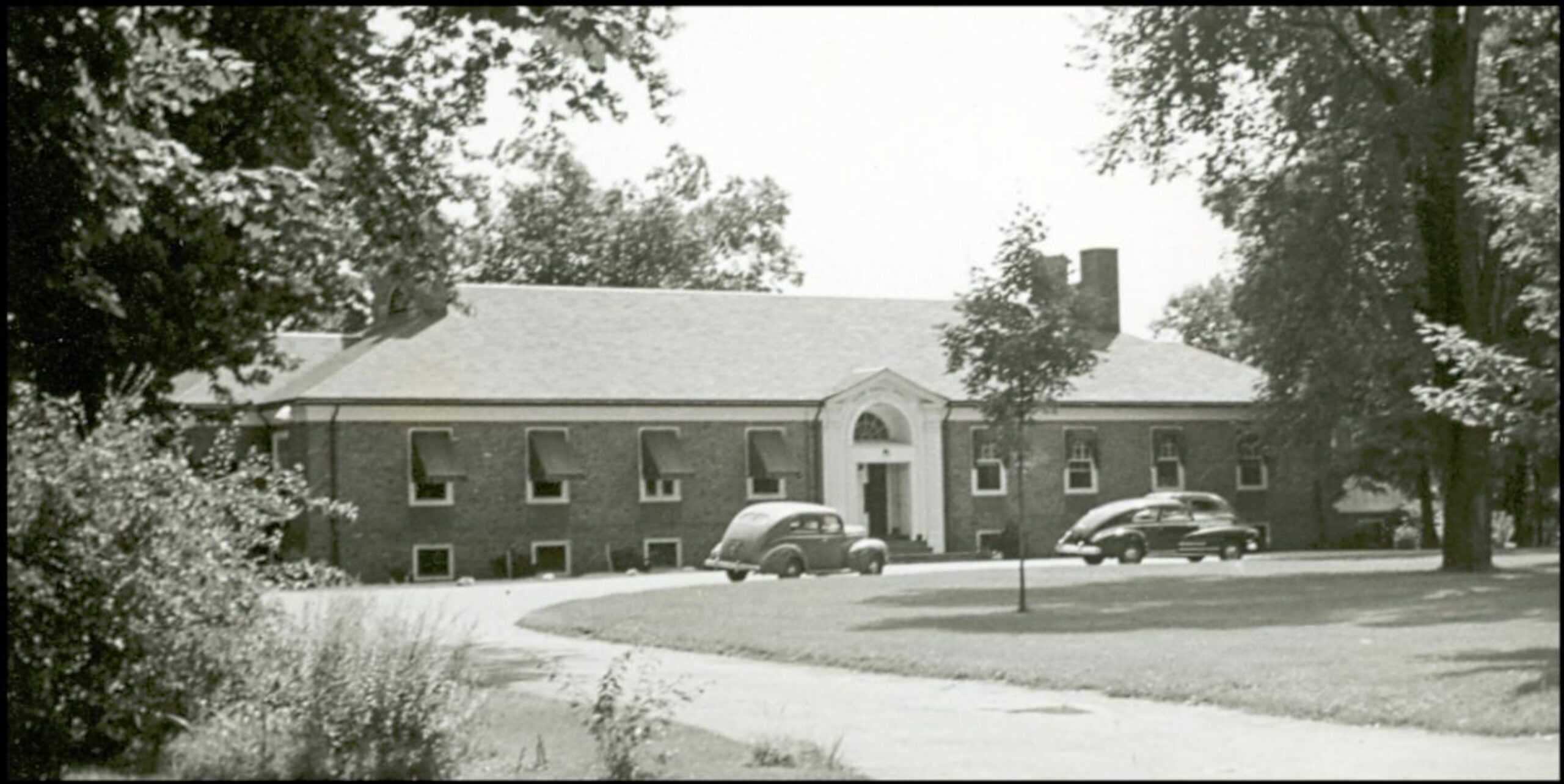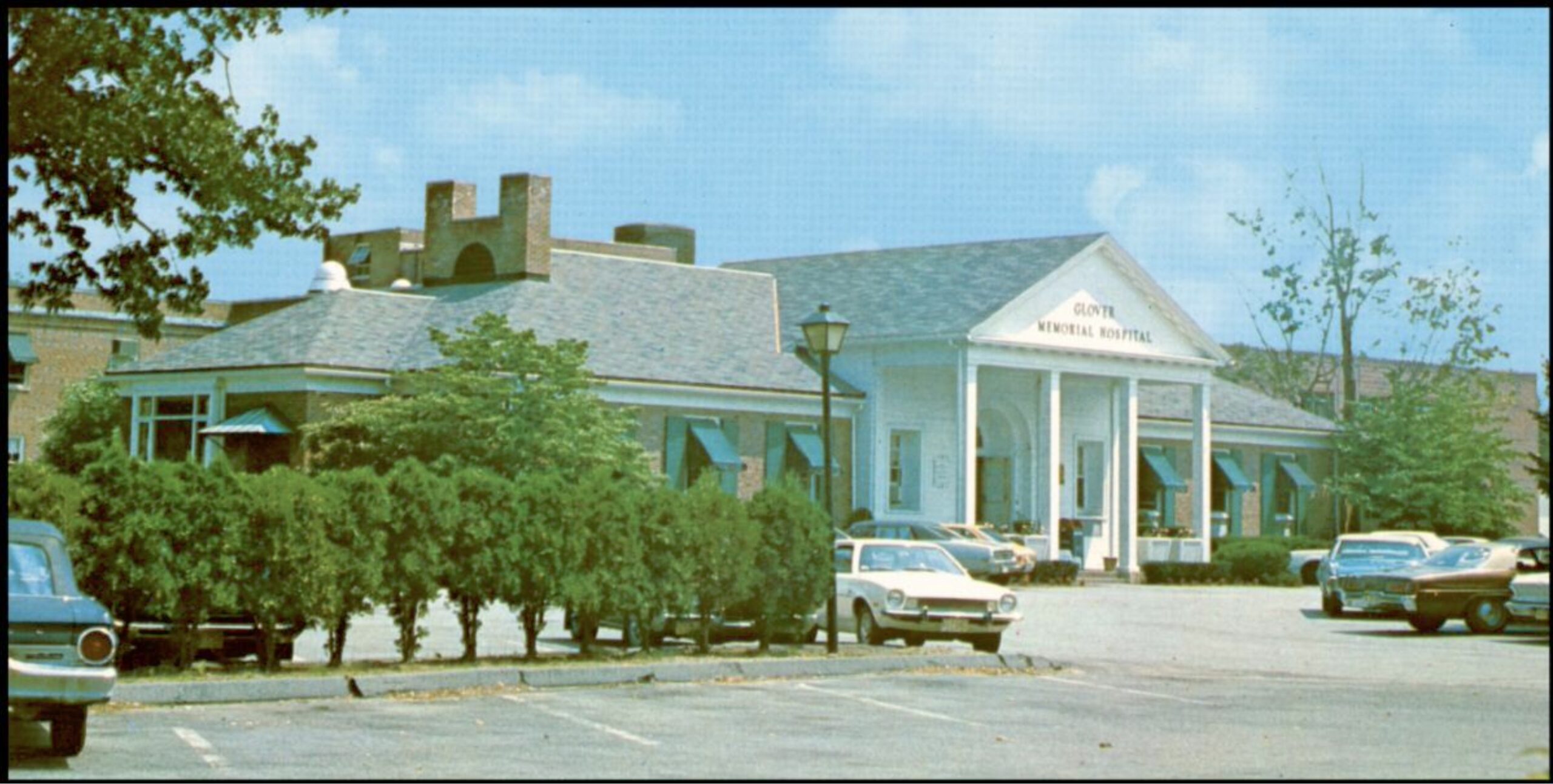
Needham History: A Comfort Always to Those Who Need It
Underneath it all, it is still The Glover
 The original Glover Home and Hospital was a conversion of Frederick Glover’s former house, deeded to the town. As the hospital grew, this house became the nurses’ quarters (on the right), and was torn down in 1977 to accommodate further expansion.
The original Glover Home and Hospital was a conversion of Frederick Glover’s former house, deeded to the town. As the hospital grew, this house became the nurses’ quarters (on the right), and was torn down in 1977 to accommodate further expansion.
“A Comfort Always to Those Who Need It”
The Beth Israel Deaconess Hospital – Needham on Chestnut Street has recently opened state-of-the-art cancer and surgical facilities, the latest parts of a renovation and expansion that has been going on for several years. The hospital has been an affiliate of the Deaconess hospital system since 1994. After the Deaconess and Beth Israel Hospitals merged, the decision was made to expand and modernize the hospital into a regional medical center. Further mergers and expansions have continued in the past few years. Looking at this modern hospital, it is hard to remember that underneath it all is a century-old local clinic, still known around town as The Glover.
The Glover Home and Hospital was named after Frederick Pope Glover, who bequeathed his estate to the town for the purpose of founding a hospital in his name. Glover was not a doctor, as is often supposed. He had been, at various points in his life, a shoemaker, a shopkeeper, a gold prospector during the Gold Rush, a railroad surveyor, a mule-driver, a trail guide, real estate speculator, and again a shopkeeper. He settled in Needham later in his life, and served the town in several capacities, including a term or two as Selectman.
Around 1890, Glover set up a business near Harris Avenue selling spring water – drawing on the same source that supplied drinking water to the Dedham Avenue reservoir. The Bird’s Hill Spring Water Company was successful, and Glover acquired a moderate fortune. Without children or much other family, Needham was the main beneficiary of his generosity.
When he died in 1901, Glover bequeathed his property and assets to the town on the condition that they convert his Chestnut Street home into a hospital within two years, or the funds would revert to the Overseers of the Poor for the relief of the deserving poor in town. However, the town government did not want a hospital – the Boston hospitals were quite close enough, thank you very much. They preferred to use the money for other purposes, particularly (and ironically) improvements to the municipal water system.
But there were also strong factions in town who could see the benefits of having a local hospital. The mill owners in the Heights, especially J.B. Thorpe and William Carter, favored the hospital plan for the benefit of their employees, who were subject to frequent injuries by the nature of their work. Local doctors, particularly William Mitchell, looked forward to having local access to surgical facilities. Glover’s executor, William Moseley, was also a mill owner, and he dragged his feet in turning over the funds to the Overseers in expectation that the hospital plan would eventually come through. It finally did in 1910, when Town Meeting reluctantly voted to accept the gift after all. The hospital opened on
September 16, 1912.
The first hospital was an 11-bed facility, with small operating and obstetrical rooms, a nursery, and two wards. Charges did not cover costs and the hospital was chronically in debt. Nevertheless, it was well-used, especially for maternity – in its first full year of operation, there were 122 patients, and 22 babies.
 A view of the “new” Glover in the late 1940s. The old house is out of the picture, to the right.
A view of the “new” Glover in the late 1940s. The old house is out of the picture, to the right.
The hospital really came into its own in 1918, when the flu epidemic reached Needham. The Spanish Influenza devastated Europe in the closing years of World War I. It spread rapidly in the close and filthy conditions of the trenches, and the death rate among the already exhausted soldiers was high. Troops returning home from the Front carried the flu throughout Europe and the United States, accelerating the spread of the flu through the civilian population.
The first cases in Needham were recorded in mid-September 1918, and by the following week totaled nearly 200. The Board of Health was not set up to meet such a crisis, and was completely overwhelmed. Selectman David Murdoch organized an Emergency Health Committee of municipal officials, doctors, the Red Cross and the Auxiliary Nurses, and took over the hospital for emergency use. The Committee established quarantine procedures, pressed the local tradesmen into service to expand the hospital’s plumbing and heating systems, tripled the number of beds, hired additional doctors and nurses, set up an emergency kitchen, and dragooned 25 local drivers into using their cars as ambulances and transports.
The outbreak finally subsided in January. There were several hundred cases and 121 hospitalizations, but only 22 deaths. The relatively small number of deaths was a credit to the rapid actions of the Emergency Health Committee, and to the facilities and staff of the Glover Hospital. The emergency did no good at all for the hospital’s financial state, but following the flu outbreak, no one doubted any longer the benefits of having a good local hospital.
The Glover’s days as a cottage hospital and clinic are long behind it. Since merging with Deaconess in 1994, its network and facilities have grown rapidly. Now a part of the Beth Israel-Deaconess-Lahey system, the hospital features an abundance of specialist facilities, and draws on the renowned talent of the Boston medical establishment. For more than 100 years, having a hospital in Needham has been an amenity that have benefited us all.
“A hospital appeals very strongly to me. The times through which we have just passed show how much we need such an institution. A hospital will be a comfort always to those who need it.” (Town Clerk Thomas Sutton, letter to the Needham Chronicle, 8 February 1919)
Some of us still remember when the Hospital looked like this. 1970s postcard.
 |
Gloria Polizzotti Greis is the Executive Director of the Needham History Center & Museum. For more information, please see their website at www.needhamhistory.org. |

